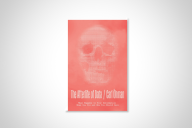You have /5 articles left.
Sign up for a free account or log in.
Memories have a way of turning into history behind your back -- and they do so, I’ve noticed, more often and with greater stealth over time. My most recent experience of this came while streaming The Activists: War, Peace and Politics in the Streets, a documentary that the director, Melody Shemtov, calls “an educational film about the antiwar movement.”
That phrase, for many viewers, will immediately call up a whole string of images from the days of the “television war” in Vietnam. And indeed, the first quarter of the film’s approximately one-hour running time incorporates scenes of protest from that era that will feel familiar to frequent viewers of historical documentaries, whether or not you’ve seen any particular clip before. Then the visual center of gravity, so to speak, shifts noticeably.
The camera continues to show crowds in the street, but the footage has that very bright, sharp quality of digital video. It is a visual texture that will no doubt eventually become a marker of historical distance -- the way something recorded on eight-millimeter film or home video now strikes the eye as self-periodizing. But for now, as far as I can tell, it doesn’t register that way. The viewer may have a sense of being plunged into the present -- except for the fact that there is no antiwar movement to speak of now.
One did emerge during the first decade of this century, involving protests that, at their peak, drew hundreds of thousands of people. The Activists uses interviews with organizers and participants (including a number recorded “on the ground” at demonstrations) to recount how the antiwar movement of the George W. Bush era waxed and waned. The director also uses interviews with people at pro-war rallies -- which, while tending to be minuscule affairs of a few dozen people at the edge of the crowd, always got disproportionate coverage by the news media. On the other hand, they were always there, and it’s an understandable if not indisputable decision to include them as part of the story.
One of the talking heads in The Activists is Michael T. Heaney, a political sociologist I interviewed for this column a little over 10 years ago. At the time, he was doing field work for what became Party in the Street: The Antiwar Movement and the Democratic Party After 9/11, a book he co-authored with Fabio Rojas, published by Cambridge University Press, in 2015. Their research struck me at the time as interesting enough to cover it (here and here) as the movement they were studying went into decline.
Heaney, who is an assistant professor of organizational studies and political science at the University of Michigan, is also listed as a producer and writer of The Activists. He and Shemtov explained the background of their collaboration to me in the course of email discussions. They had known each other as students at the University of Chicago and crossed paths again when she happened to visit the University of Florida while Heaney was teaching there. At the time she was an associate producer at David Grubin Productions, where she was part of the production team that earned an Emmy for The Mysterious Human Heart, a PBS documentary. She told Heaney that she hoped to form her own film company, Melofilms, and he pitched her the idea of a documentary on the antiwar movement.
She liked the idea and kept up with Heaney’s work as he and Rojas conducted their study of the movement in the late ’00s. “His research papers were the road map for the film, both before and during production,” Shemtov says. The connections he had established with leading organizers of the antiwar movement became particularly helpful when she began conducting interviews.
Where scholarly framework and documentary format coincide most markedly is in the emphasis The Activists places on the antiwar movement as an assemblage of collaborating but distinct groups. Some of those groups were formal organizations with members and points of unity -- for example, Code Pink. Others appear to have been loose networks of friends, such as the Granny Peace Brigade. In addition ad hoc clusters of people formed around a sensibility or a shared preference in forms of protest, as would appear to have been the case with Funk the War.
The filmmakers interview figures from the two major antiwar coalitions of the day, which called for the national protests, got the permits and otherwise created the overall structure of the antiwar movement. And it would be easy to narrate the whole history of the movement as a story of the coalitions’ periods of antagonism and cooperation. But Heaney and Rojas’s studies at the time showed that the ideological and organizational differences between them did not correspond to major differences between the constituencies of each coalition.
The latter were necessary to (say) reserve parking for the buses bringing people in from out of town. But what actually got people on the buses tended to be networks and affiliations that were a lot more local and granular.
The election of Barack Obama in 2008 proved to be the end of the antiwar movement, although not of the wars it had opposed. The filmmakers treat the Tea Party, the Arab Spring and Occupy Wall Street as developments in part inspired by the protests, which I find more plausible as an ending move than as a historical claim. Anyone using The Activists as an educational film would do well to consider Heaney and Rojas’s later work, which suggests that the ebb and flow of mass protest has become one aspect of the polarization of American electoral politics.
It would have made no sense to think of the Vietnam-era protests in such terms. The war had bipartisan support at first; opposition to it intensified even as antiwar sentiment broadened within the American public. I mention this not as a criticism of the documentary but as a reminder to viewers not to assume that mass protest is just normal politics continued by other means. Least of all, perhaps, when politics itself seems to get more abnormal by the day.








